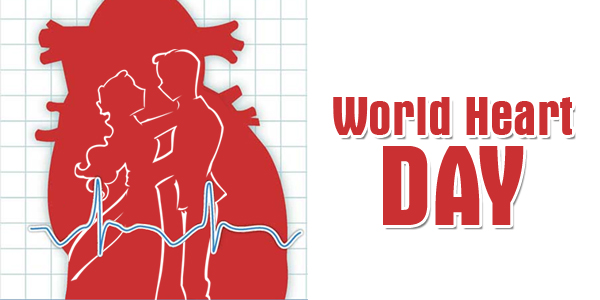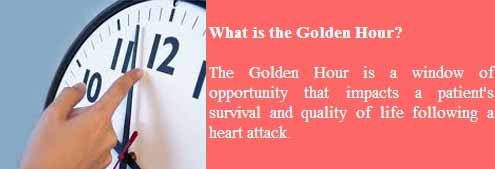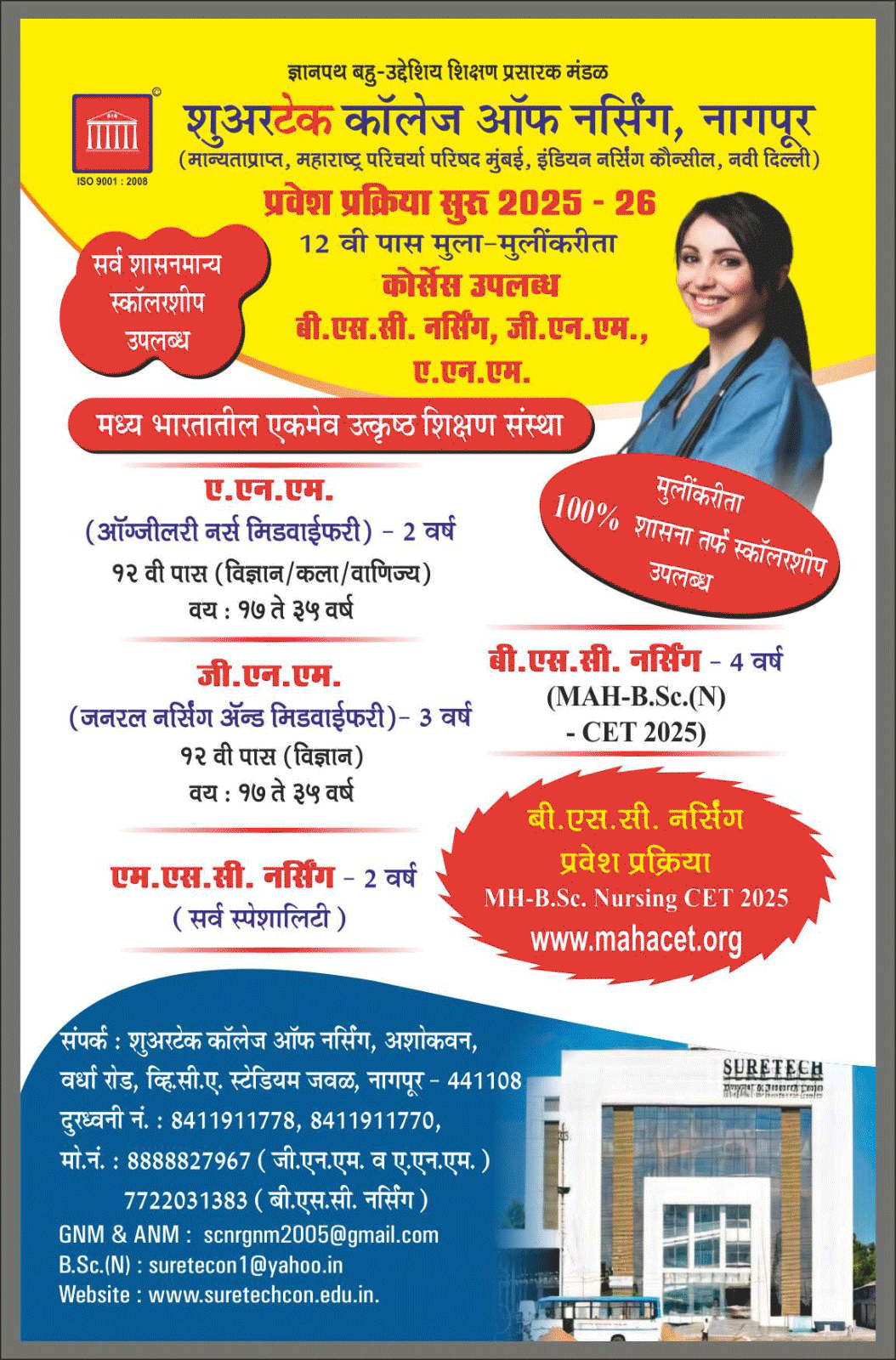
Sedentary lifestyle, stressful work conditions and compromised diet are leading factors in precipitating heart disease risk among young work force in the age group of 25-30 in the country. This meant that Young people’s heart is ageing much faster. Lifestyle factors have also contributed to increase in CVD risk that includes increase in consumption of fried and processed foods.
Smoking, drinking and other habits that the youth of today indulge in is one of the major causes or factors of CVD risk. High parental expectation to excel, peer pressure, constant competitive atmosphere, complicated inter-personal relationships, immaturity to deal with them, lack of right role models, financial burdens etc are some of the problems that the youth deals with on a day to day basis. Lack of physical exercise, sports activities often make young people obese, lethargic etc. What should a youth of today do to lead a healthy yet competitive and wholesome life? Nagpur Today talked to some of the leading Doctors dealing with Cardio-Vascular-Diseases.
 Dr. Prashant Jagtap, Wochardt: The risk of heart attack has increased manifold times since the lifestyles have undergone a sea of change. To add to that the stress imposed by various factors have also increased as well. Smoking is one of the major causes of CVD risks. One should promote healthy lifestyle and exercises. A balance in the work commitments, exercises and healthy eating habits should be adopted. There definitely should be limitations to mental work and stress. Youngsters in fact should make physical exercise mandatory and strive to stay fit. Work values should be revised. These days when youth relax even while on the phone. They should make it a must to ‘walk while they talk’ which would ensure some exercise.
Dr. Prashant Jagtap, Wochardt: The risk of heart attack has increased manifold times since the lifestyles have undergone a sea of change. To add to that the stress imposed by various factors have also increased as well. Smoking is one of the major causes of CVD risks. One should promote healthy lifestyle and exercises. A balance in the work commitments, exercises and healthy eating habits should be adopted. There definitely should be limitations to mental work and stress. Youngsters in fact should make physical exercise mandatory and strive to stay fit. Work values should be revised. These days when youth relax even while on the phone. They should make it a must to ‘walk while they talk’ which would ensure some exercise.
Dr Nitin Tiwari, Wochardt: I would like mention that youth are unaware of the fact that they themselves are at great risks. Many people have a wrong notion that just old people face sudden heart attacks, which is apparently untrue. Improper work-life balance create lots of problems. Smoking on the other hand has become a trend, which is the major sphere that need to be controlled. In addition to this, sedentary lifestyles have taken an uptrend, due to advancement in work culture. Gardens, lawns, clear lands have also greatly reduced which used to offer space for physical activities, exercising in the fresh air. India may soon become a diabetic capital as well, hence bringing about an increment in the ratio of CVDs. Indians are genetically more pre-disposed to heart diseases, especially those who possess such diseases in their family history. Hence they need to be extra cautious. One should increase the intake of fruits, vegetables, whole grains in their diet. Avoiding vehicles for conveyance and preferring to walk instead is beneficial. He added that if people undertake brisk walking or aerobic exercises like cycling for 5 days a week it would make a huge difference in the health potential of the youth. However stress is one of the biggest killers. I would however like to stress on the need to create awareness among the youth about the potential cardiac risks. The symptoms like heaviness in the chest that lasts for more than a few minutes should ring warning bells and one should just make sure that they immediately visit the nearest PCI (Percutaneous Coronary Interventional Procedures) Capable centre or angioplasty capable centre, so that within that golden hour, Medical practioners can conduct primary angioplasty and save lives.
 Dr Aziz Khan, Crescent Hospital: Yes! Today’s youth do run a lot of CVD risks. Previously what was limited to be a common disease among elderly is now very prevalent among young people and women. One of the major factors that play a very vital role is family history of cardiac problems (If either parent suffers from CVD). Smoking, lack of physical exercise, eating high cholesterol food (Junk Food), extreme mental stress due to education, career, inter-personal relations etc are some of the factors that lead to CVDs among youth of today. Bad habits like smoking drinking etc too are major causes of CVDs among youth. Working girls / women also run a high risk of cardiac problems. The reason being high stress in the work place to add to the responsibilities at home. Obesity, mental depression due to repression of feelings and feelings and wants are some of the causes of CVDs among women. Youth should change the life-style to start with. They should love one’s own life and body that Almighty God has given them. They should take care of it by eating properly, eating a balanced diet, exercising on a day to day basis, undertaking all such activities that help them relieve the stress that they gather from work place inter-personal relations etc.
Dr Aziz Khan, Crescent Hospital: Yes! Today’s youth do run a lot of CVD risks. Previously what was limited to be a common disease among elderly is now very prevalent among young people and women. One of the major factors that play a very vital role is family history of cardiac problems (If either parent suffers from CVD). Smoking, lack of physical exercise, eating high cholesterol food (Junk Food), extreme mental stress due to education, career, inter-personal relations etc are some of the factors that lead to CVDs among youth of today. Bad habits like smoking drinking etc too are major causes of CVDs among youth. Working girls / women also run a high risk of cardiac problems. The reason being high stress in the work place to add to the responsibilities at home. Obesity, mental depression due to repression of feelings and feelings and wants are some of the causes of CVDs among women. Youth should change the life-style to start with. They should love one’s own life and body that Almighty God has given them. They should take care of it by eating properly, eating a balanced diet, exercising on a day to day basis, undertaking all such activities that help them relieve the stress that they gather from work place inter-personal relations etc.
 Dr Sunita Deshmukh, Arneja Hospital: Yes! Today’s youth between the age group of 25-30 are prime candidates for CVDs. The basic factors are life-style disorders, improper sleeping (including odd sleeping hours), eating junk food instead of a proper balanced diet, being involved in high stressful education, career etc. They are not at all health conscious. The depression among the youth is highly under-diagnosed. Many stressful things, activities get steadily piled up and one day give vent to CVD. Bad habits like smoking drinking etc too are major causes of CVDs among youth. The youth of today need to take out time for themselves, eat a proper balanced diet, sleep properly and sufficiently, get involved in stress-buster activities and hobbies that relieve them of the stress that have built up, slow down from their fast moving life are some of the things that the youth should undertake immediately or the figures may soon rise to alarming proportions.
Dr Sunita Deshmukh, Arneja Hospital: Yes! Today’s youth between the age group of 25-30 are prime candidates for CVDs. The basic factors are life-style disorders, improper sleeping (including odd sleeping hours), eating junk food instead of a proper balanced diet, being involved in high stressful education, career etc. They are not at all health conscious. The depression among the youth is highly under-diagnosed. Many stressful things, activities get steadily piled up and one day give vent to CVD. Bad habits like smoking drinking etc too are major causes of CVDs among youth. The youth of today need to take out time for themselves, eat a proper balanced diet, sleep properly and sufficiently, get involved in stress-buster activities and hobbies that relieve them of the stress that have built up, slow down from their fast moving life are some of the things that the youth should undertake immediately or the figures may soon rise to alarming proportions.

The Golden Hour is a critical time because the heart muscle starts to die within 80-90 minutes after it stops getting blood, and within six hours, almost all the affected parts of the heart could be irreversibly damaged. So, the faster normal blood flow is re-established, the lesser would be the damage to the heart.
How do we recognize a heart attack?
Many times, a person may not realize that he or she is having a heart attack. By and large, the warning signs are:
- Chest discomfort
- Discomfort in the arm, neck, or jaw
- Shortness of breath
- Nausea or light headedness
If you think you have one or more of these symptoms, you need to call the emergency services of a nearby hospital, or get somebody to drive you to the hospital.














